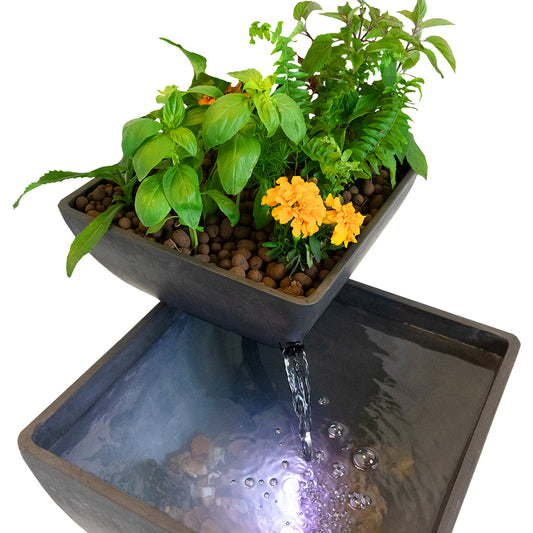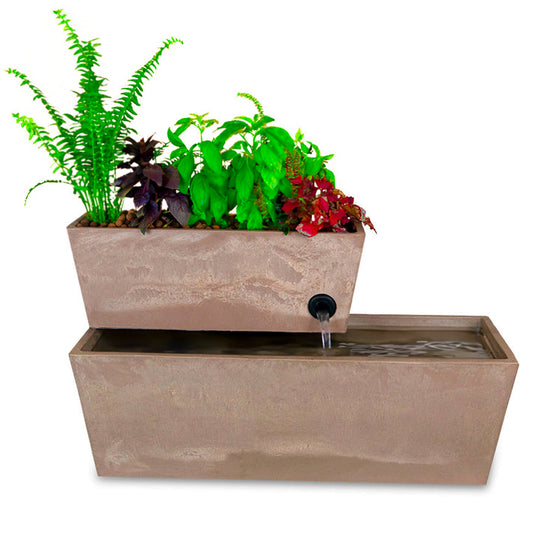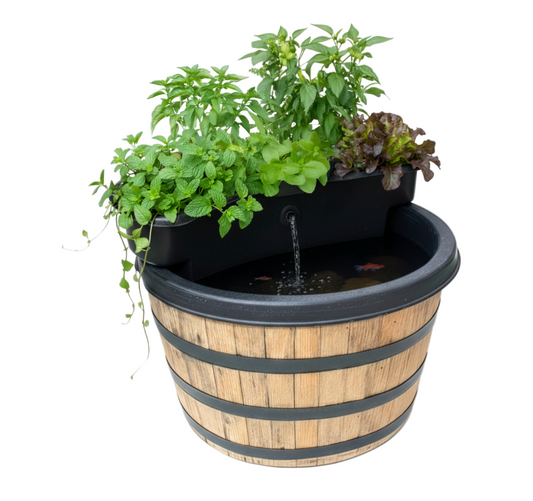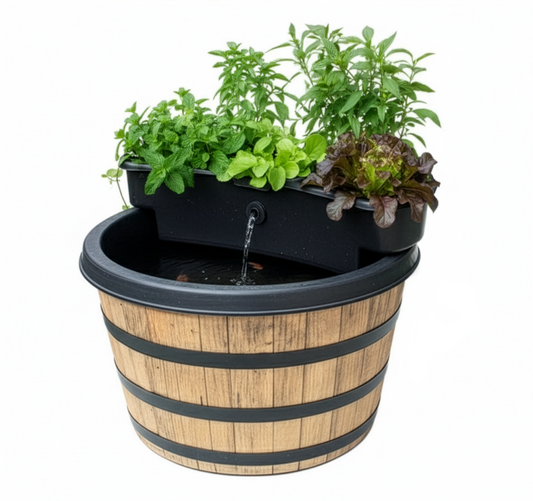Algae in Aquaponics: A Guide to Prevention and Control
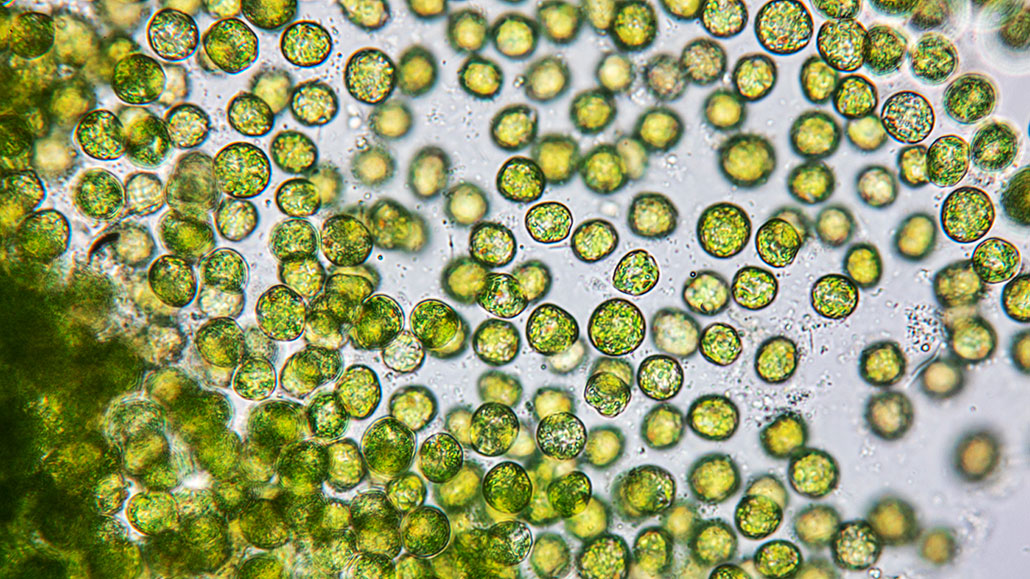
Algae can be a problem in any aquatic environment. They can quickly grow out of control and damage the system, making it difficult to grow healthy plants and fish. However, there are a number of things that can be done to prevent and control algae growth in aquaponics. What is Algae? Algae are simple, plant-like organisms that can live in both fresh and saltwater. They come in a variety of shapes and sizes, and some species can even be harmful to humans. In aquaponics, the most common type of algae is green algae. Green algae is a single-celled organism that gets its energy from sunlight. It can grow rapidly in warm, nutrient-rich water, and it can quickly clog filters and pipes.
Why is Algae a Problem in Aquaponics?
Algae can cause a number of problems in aquaponics systems. Here are some of the most common problems:
- Clogging filters and pipes: Algae can quickly clog filters and pipes, making it difficult for water to circulate through the system. This can lead to problems with water quality, and it can also damage the system itself.
- Low dissolved oxygen: Algae can consume dissolved oxygen in the water, which can lead to problems with fish health. Fish need dissolved oxygen to breathe, and low dissolved oxygen levels can stress or kill fish.
- pH swings: Algae can consume CO2 from the water, which can lead to pH swings. pH swings can be harmful to fish and plants.
- Nutrient imbalance: Algae can quickly use up nutrients in the water, which can starve plants and fish.
- Diseases: Some species of algae can carry diseases that can infect fish and plants.
How to Prevent Algae Growth in Aquaponics.
There are a number of things that can be done to prevent algae growth in aquaponics. Here are some of the most effective methods:
- Choose the right location: Algae thrives in warm, sunny environments. If you can, choose a location for your aquaponics system that gets partial shade.
- Use a black liner: A black liner will help to absorb heat from the sun, which will make the water cooler and less inviting to algae.
- Add a biofilter: A biofilter will help to remove nutrients from the water, which will make it less likely that algae will grow.
- Add plants: Plants compete with algae for nutrients and sunlight. The more plants you have in your system, the less likely you are to have a problem with algae.
- Cover the fish tank: Covering the fish tank will help to reduce the amount of sunlight that reaches the water. This will make it more difficult for algae to grow.
- Monitor water quality: Regularly monitor the water quality in your system. If you see any signs of algae growth, take action immediately.
How to Control Algae Growth in Aquaponics
If you already have a problem with algae in your aquaponics system, there are a number of things that you can do to control it. Here are some of the most effective methods:
- Physical removal: You can remove algae manually by scooping it out of the water or by using a net.
- Chemical treatment: There are a number of chemicals that can be used to kill algae. However, it is important to use these chemicals carefully, as they can also be harmful to fish and plants.
- UV sterilization: UV sterilization can be used to kill algae in the water. UV sterilizers are relatively expensive, but they are a safe and effective way to control algae growth. UV lights are not recommend for use in small aquaponic systems -- they can quickly kill off your beneficial bacteria.
- Algae eaters: There are a number of fish and invertebrates that eat algae. Adding algae eaters to your aquaponics system can help to control algae growth. Check out our blog post dedicated to these industrious little critters.
Algae can be a problem in aquaponics, but it is important to remember that it is a manageable problem. By following the tips, you can prevent and control algae growth in your aquaponics system and enjoy a healthy, productive system for years to come. In addition to the tips mentioned in this blog post, there are a few other things that you can do to help prevent algae growth in your aquaponics system. These include:
- Test your water quality regularly: Make sure that your water pH, temperature, and nutrient levels are within the correct range.
- Clean your filters regularly: Dirty filters can provide a breeding ground for algae.
- Prune your plants regularly: Overgrown plants can shade out algae so keep your plants growing their best by regularly pruning/harvesting.
- Aerate your water: Aeration helps to increase the dissolved oxygen levels in the water, which makes it less hospitable to algae. You can aerate your water by using an air pump and air stones.
- Add beneficial bacteria: Beneficial bacteria can help to compete with algae for nutrients and space. You can add beneficial bacteria to your aquaponics system by using many of the available Beneficial Bacteria products on the market.
- Use a timer for your lights: If you use artificial lights for your aquaponics system, use a timer to control the amount of time that the lights are on. This will help to prevent algae from getting too much sunlight.
- Keep your water cool: Algae thrives in warm water. If you can, keep the water temperature in your aquaponics system below 75 degrees Fahrenheit.
- Be patient: It takes time to establish a healthy aquaponics system. Don't get discouraged if you have a problem with algae in the beginning. Just keep working at it, and you will eventually get it right.


